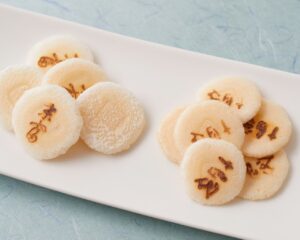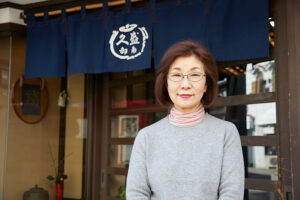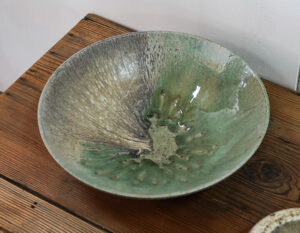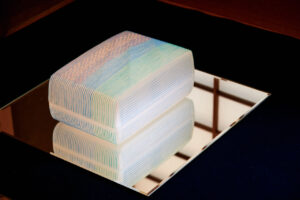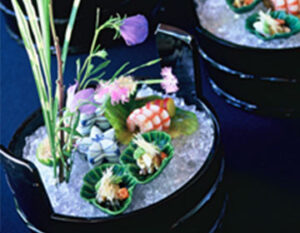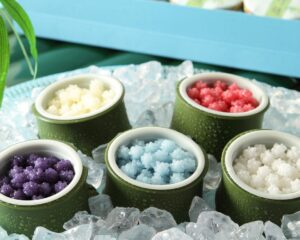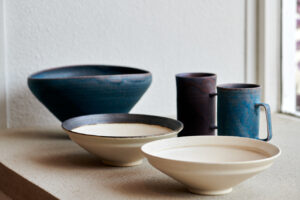Compared to teacups and teacups, it is surprisingly difficult to find a kyusu that one likes. Among them, the kyusu of Jyoji Nakamura, a Kyoto-yaki and Kiyomizu-yaki artist who has won many prizes at pottery exhibitions and also produces art works, is secretly gaining popularity. Nakamura’s vessels are all designed to fit in with modern homes.
Nakamura moved from Osaka to Kyoto when he entered university. While still in school, he was selected for a ceramic art exhibition
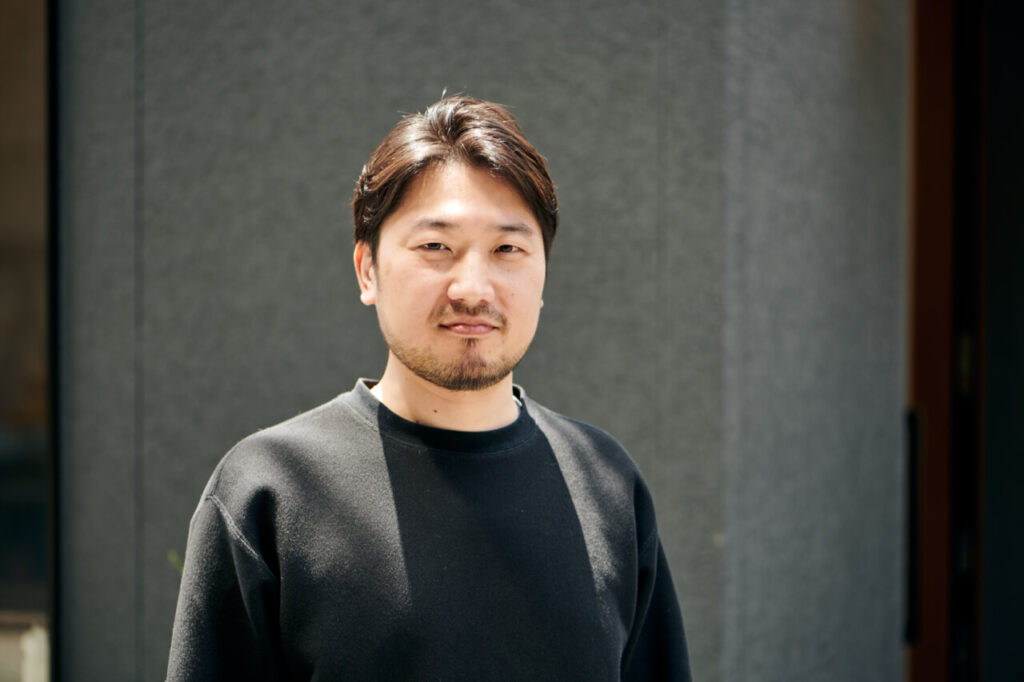
After graduating from an art high school, Osaka native Joji Nakamura came to Kyoto at the age of 18 to study ceramics at Kyoto Seika University’s Faculty of Art and Design. After graduating from the university, he apprenticed himself to potters Kozo and Yoshinobu Kawashima in Sumiyama, Uji City, Kyoto Prefecture, where he lived and worked for three years. He recalls that this period, during which he learned the know-how of practical ceramic arts such as pottery, was an important starting point for him.
While still in college, Nakamura was selected for the Asahi Ceramic Art Exhibition, which is regarded as a gateway to success for ceramic artists, and during his apprenticeship, he was selected and won prizes at several public exhibitions. Although he was originally prohibited from participating in exhibitions during his apprenticeship, his teachers gave their tacit approval when they saw how dedicated Nakamura was to his work and how he continued to create artwork whenever he had free time.
In 2012, after a period of time during which he worked mainly on artwork in parallel with his work at the Kiyomizuyaki ware complex in Yamashina-ku, Kyoto and as a part-time lecturer at his alma mater, Seika University, Nakamura established G-studio, a studio that operates as a production line for practical products separate from art production, on Gojozaka, which is also known as the birthplace of Kiyomizuyaki. G-studio” was established on Gojozaka, known as the birthplace of Kiyomizuyaki. She decided to start producing practical products when she got married, and as a result, the range of Nakamura’s style has expanded even further.
Studio in the Center of Kyoto and Kiyomizuyaki Ware
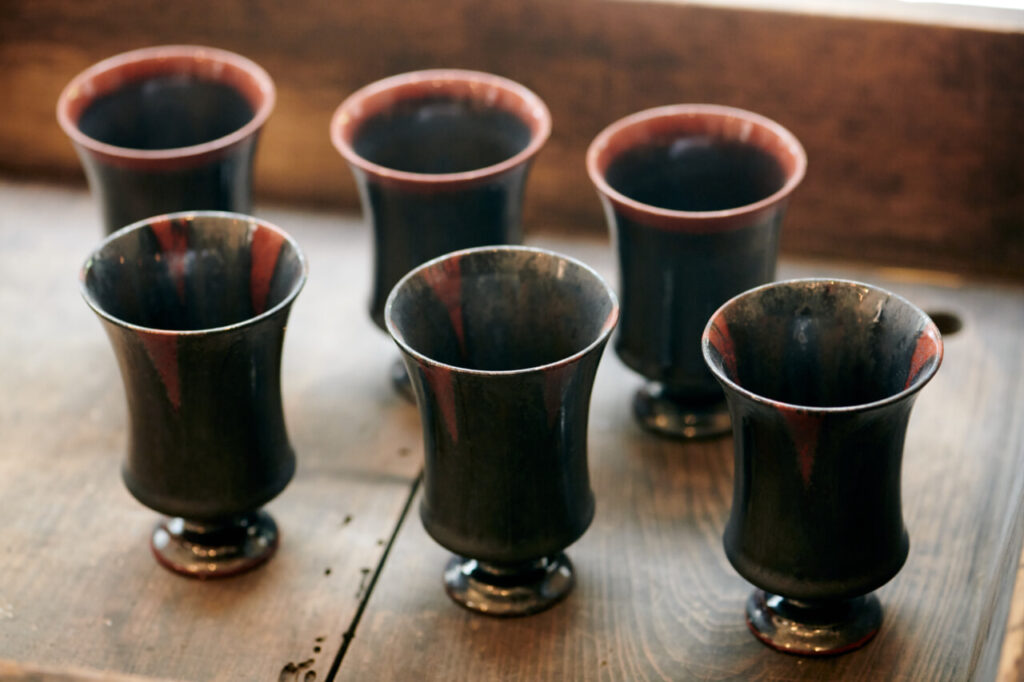
The area around Gojozaka in Higashiyama-ku, Kyoto, where Nakamura’s studio is located, has flourished since the mid-Edo period as the area in front of Kiyomizu-dera Temple, where pottery was produced and sold as souvenirs to visitors to the temple. Gojozaka was also the base of the potter Kawai Kanjiro, who was active as a folk art activist along with Yanagi Muneyoshi and others.
If I were to set up my own studio, it would be in the Gojozaka area. Nakamura says that he had decided to set up his own studio in the Gojozaka area even before he started his own business. Because he is a newcomer from another prefecture and is not the heir to a kiln, he decided to work in the center of Kyoto and Kiyomizu-yaki pottery. The choice of Gojozaka was a sign of his determination to live as an artist in Kyoto.
In fact, he says that he learned a lot from using this location as his base.
Not only did he make connections with many ceramic artists in the surrounding area, but he also had many opportunities to interact with tourists from Japan and abroad in this area where hotels and guesthouses are located. The stimulation and insight gained there sometimes led to the creation of new works of art. The tea ceremony utensils that are now Nakamura’s masterpieces were created as a result of such opportunities.
Chinese tourists were the catalyst for Nakamura’s tea ceremony utensils.
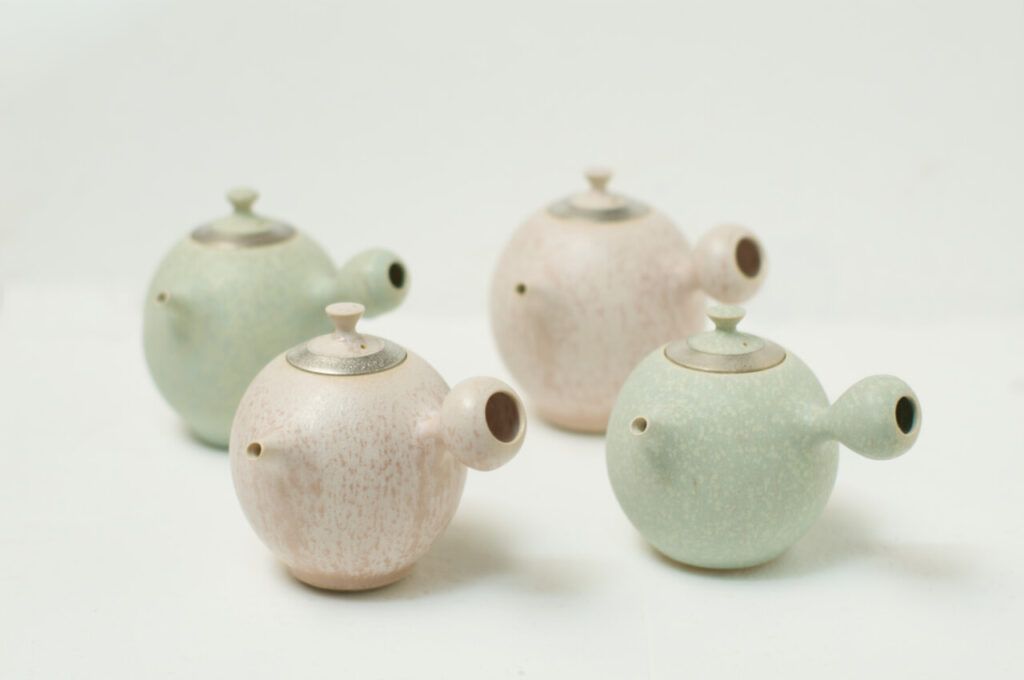
At a time when inbound tourism was booming, Chinese tourists from all over the world were particularly conspicuous among the visitors. He decided to make tea utensils for brewing Chinese tea, and they were well received by Chinese tourists and Japanese alike. Since then, the kyusu has become one of Nakamura’s masterpieces.
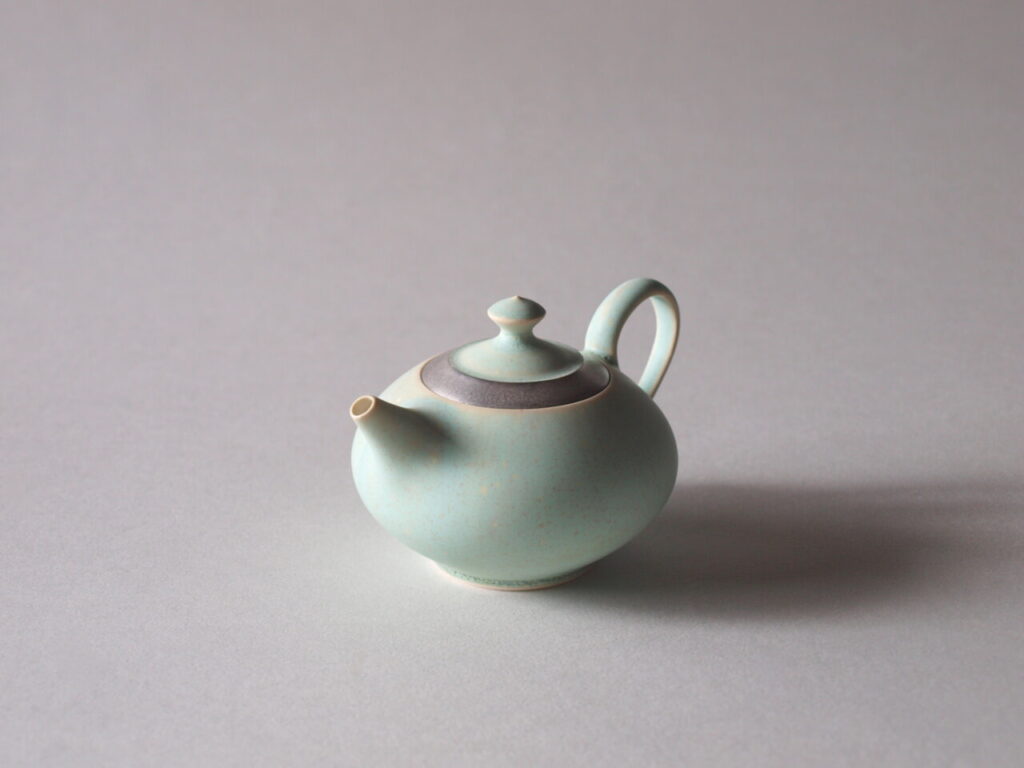
What is most distinctive about this kyusu is its size. The size of the kyusu, which is almost one size smaller than a regular kyusu and reminiscent of a Chinese tea kyusu, was born out of a desire to have a kyusu that is just right for brewing a single cup of tea during a break on a cold day. The kyusu is very useful because it is difficult to brew a single cup of tea in a large kyusu, and tea leaves are wasted.
He often names his pieces after colors, such as ” Haksusui kyusu ” ( white crystal kyusu ) and ” Fukoku ginsai kyusu” (black and silver colored kyusu ). The somewhat Asian feel to the designs reflects Nakamura’s preference for items from the Joseon Yi Dynasty, which he collects himself. At the same time, Nakamura also pays close attention to the fine handwork, such as the tight closing of the lid, so that the charm of Japanese craftsmanship and the essence of Kyo-yaki can be felt.
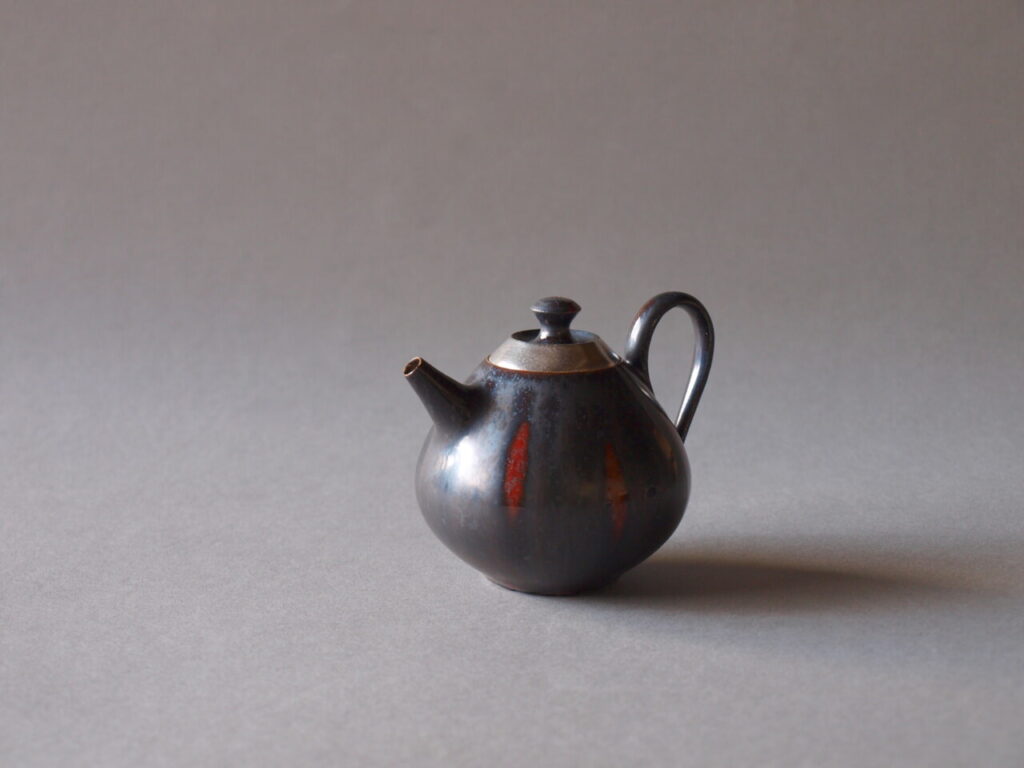
Not many people make kyusu. That is why it is so meaningful to make them.
Among potters, there are not so many who make kyusu compared to teacups and teacups. Nakamura says that because kyusu has many parts and requires a lot of time and effort to make, not many people want to make kyusu.
That is why Nakamura has been focusing on kyusu. Recently, he is often asked to make kyusu at private exhibitions and shows.
The concept behind his pottery making is to “make it to fit the building. The design is in line with modern life.
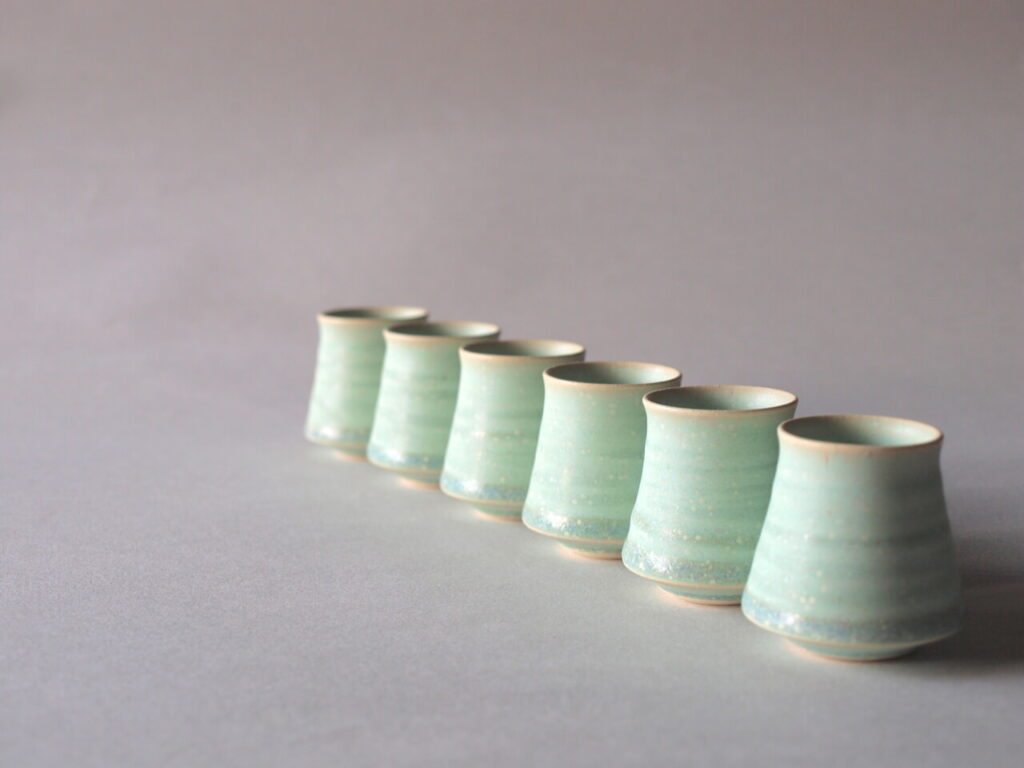
Nakamura’s kyusu, which would look at home on a Western table, and his other vessels, which would not look out of place in a modern living space, are made based on the concept of ” making to fit the building. This concept was cultivated in Kyoto, where he has lived since his student days.
There are many machiya residences in Kyoto, but when you enter one, you find that the inside has been completely remodeled, often in Western-style rooms. This is not limited to Kyoto; the same may be true of houses that have been remodeled from the old Showa period. Besides, more and more people are living in condominiums. As lifestyles change, the design of homes also changes, and the interior design changes along with it. Since tableware is also a part of interior design, I would like to propose a “modern dining experience” by creating tableware that fits the changing Japanese lifestyle.
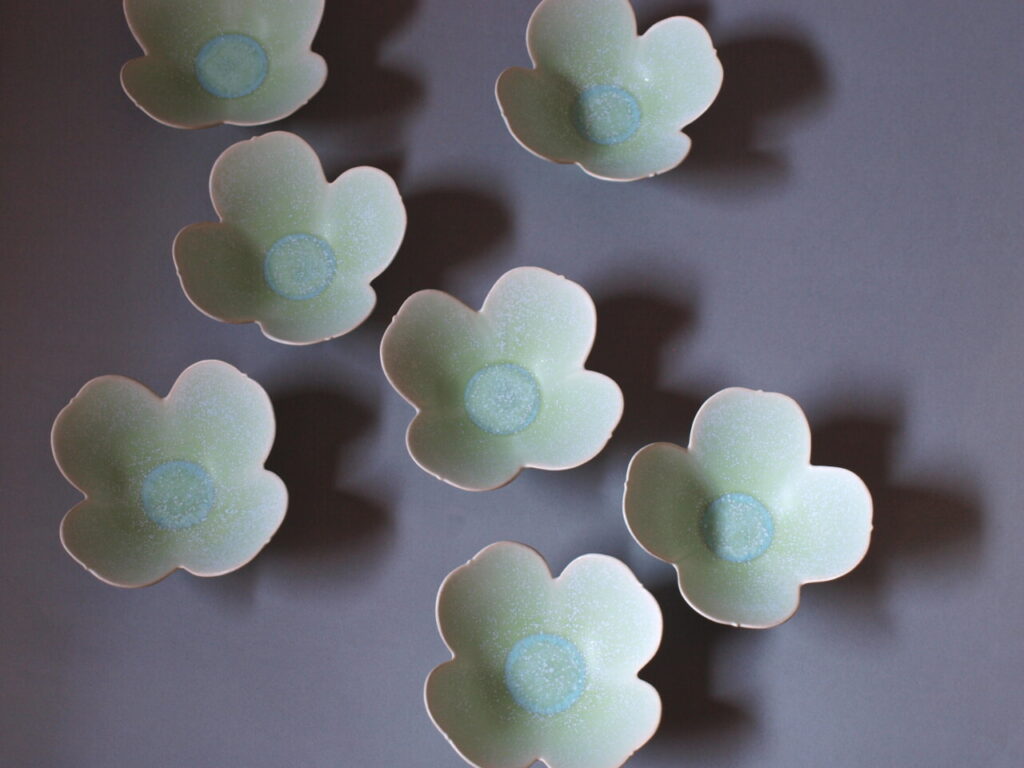
Nakamura says that when he was in high school, he was torn between ceramics and architecture when choosing a career path, but after he began to study ceramics in college, he felt that the two genres were closely connected. He felt that the two genres were closely connected after he began working in ceramics at university. This is because most practical ceramics are used in buildings, and objects in the city often form a landscape together with buildings.
Matcha bowls for a parfait at a resort hotel, which was designed to resemble a garden in Kyoto.

Aman Kyoto The Living Pavilion by Aman] “Garden Parfait Zen Garden” (early summer, 2021)
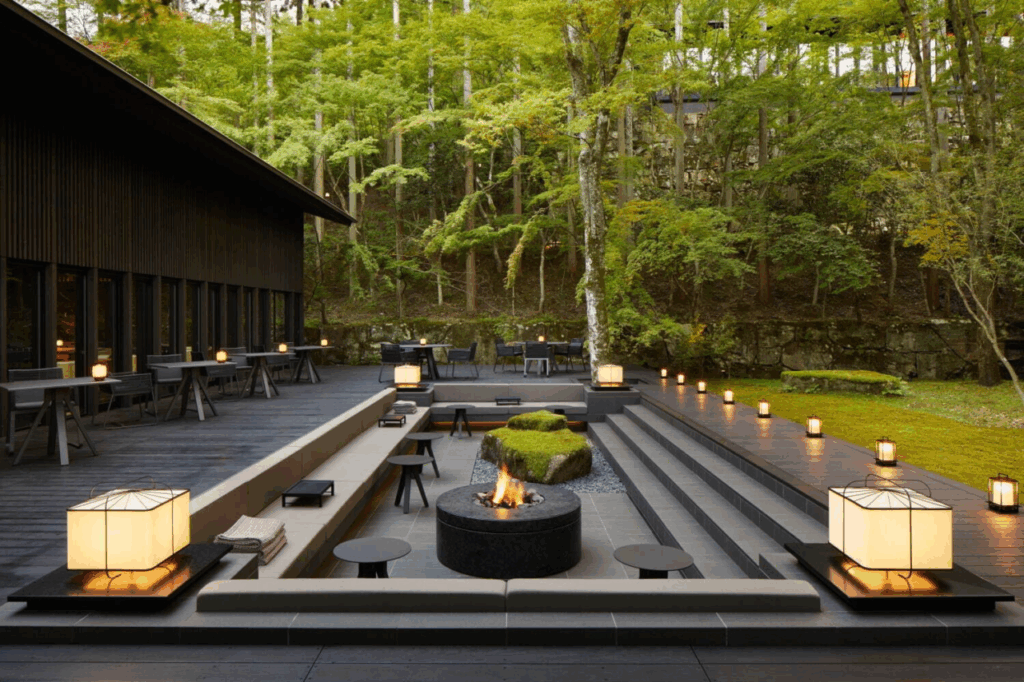
In addition to residential spaces, Mr. Nakamura also demonstrates his skills in the production of tableware for use in resort facilities.
In 2021, Nakamura made tea bowls for desserts that will be available for a limited time only during the season of fresh greenery at the Aman Kyoto resort hotel in Takagamine, an area rich in nature in the northern part of Kyoto City. The dessert is a parfait that was made to look like a Zen garden, and is served at “The Living Pavilion by Aman,” a restaurant overlooking the hotel’s beautiful moss garden. To serve the parfait, Nakamura created a ” kokujaku yugen ” matcha bowl.
The color of the bowl is black, which is also linked to the design of the hotel. The jet-black glaze, which is often used in Nakamura’s works, gives the bowl an unwavering strength and depth that firmly captures the vivid green color.
His identity as a Kyotoite has grown.
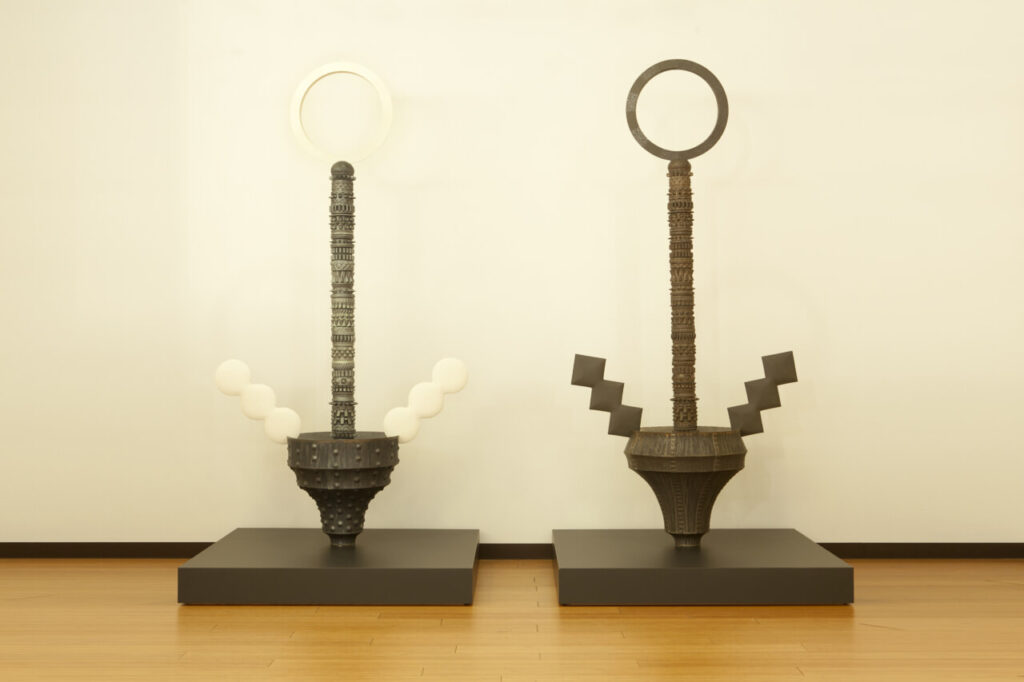
In 2013, his objet d’art “Gogu – Wind God and Thunder God” won the Kyo-ten Prize at the Kyo-ten, a public exhibition sponsored by Kyoto City that has produced many leading Japanese artists, including the Japanese-style painter Uemura Shoen, and in 2018, ” Fukuro Ginsai Chaki-asore ” was selected for the ” Ceramic Society of Japan Encouragement Award Kansai Exhibition ” held to discover local artists. Ginsai Chaki-asore ” won the Encouragement Prize. Mr. Nakamura has won awards at publicly solicited exhibitions for both his artwork and practical products, and is now one of the artists leading a new era in the world of pottery in Kyoto.
After more than 20 years in Kyoto, Nakamura says he finally feels comfortable calling himself a “Kyotoite. Nakamura’s pottery and tea ceremony utensils are often described as “Kyoto-like in their delicate style,” but when he first started out as an independent potter, he says he was never strongly aware that he was a Kyoto or Kiyomizu-yaki artist.
This is because, unlike Shigaraki-yaki and Arita-yaki, there are no rules regarding techniques or raw materials for Kyo-yaki and Kiyomizu-yaki. Because of this, it was difficult for him to have an identity that his work was Kyo-yaki, and his own perception was that he was just making what he wanted to make.
However, after establishing his own business on Gojozaka and interacting with many artists, Nakamura gradually became aware of the “Kyoto-ness” of his work.
Living in Kyoto, I sometimes meet people who make me think, ‘This person is a Kyoto artist. I believe that Kyoto-yaki and Kiyomizu-yaki are born from the “spirit of Kyoto” that comes from living in Kyoto, experiencing its scenery, air, and people, and learning about its history. I would be happy if people feel that something like that comes out in what I make.”
Some of his works are in the collections of ceramic museums in Japan and abroad.
The approximately 20 years Nakamura spent in Kyoto, and especially what he absorbed in Gojozaka, made him a Kyoto artist.
The delicate yet unwaveringly strong works produced by his hands are in the collections of the World Tile Museum (Tokoname, Aichi Prefecture), the Ichinokura Sakazuki Museum (Tajimi, Gifu Prefecture), the International Museum of Ceramic Art inFaenza (Italy), and the Honenin Temple in Sakyo-ku, Kyoto City . The museum is also housed at the Honenin Temple in Sakyo-ku, Kyoto.
Nakamura’s tea utensils, created in response to contemporary lifestyles, are sure to provide fresh impressions to visitors and easily cross borders in Kyoto, a city that has been reopened as one of the world’s leading tourist destinations and where the movement of people has become more active.




